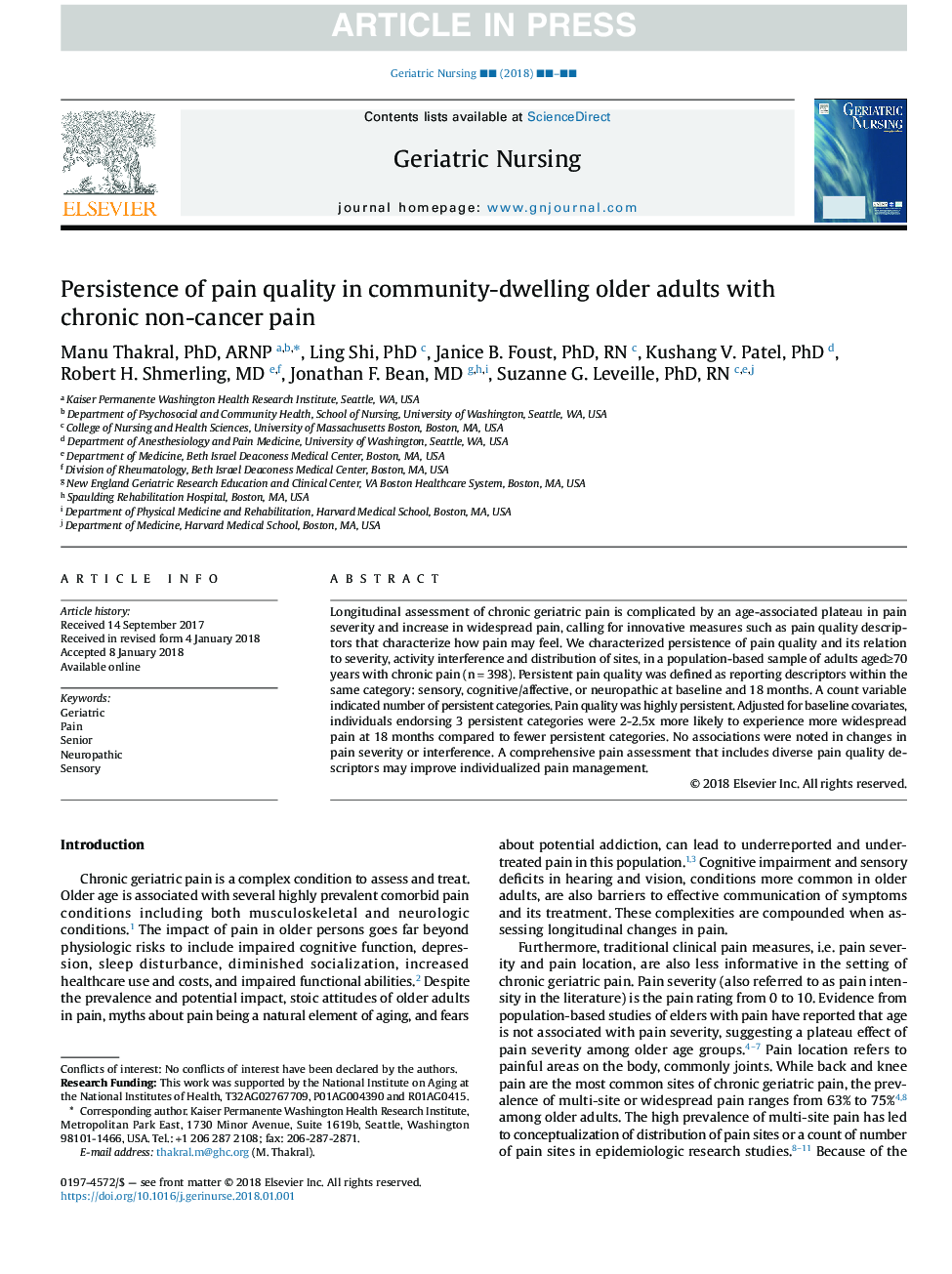| Article ID | Journal | Published Year | Pages | File Type |
|---|---|---|---|---|
| 8569838 | Geriatric Nursing | 2018 | 7 Pages |
Abstract
Longitudinal assessment of chronic geriatric pain is complicated by an age-associated plateau in pain severity and increase in widespread pain, calling for innovative measures such as pain quality descriptors that characterize how pain may feel. We characterized persistence of pain quality and its relation to severity, activity interference and distribution of sites, in a population-based sample of adults agedâ¥70 years with chronic pain (nâ=â398). Persistent pain quality was defined as reporting descriptors within the same category: sensory, cognitive/affective, or neuropathic at baseline and 18 months. A count variable indicated number of persistent categories. Pain quality was highly persistent. Adjusted for baseline covariates, individuals endorsing 3 persistent categories were 2-2.5x more likely to experience more widespread pain at 18 months compared to fewer persistent categories. No associations were noted in changes in pain severity or interference. A comprehensive pain assessment that includes diverse pain quality descriptors may improve individualized pain management.
Related Topics
Health Sciences
Medicine and Dentistry
Geriatrics and Gerontology
Authors
Manu PhD, ARNP, Ling PhD, Janice B. PhD, RN, Kushang V. PhD, Robert H. MD, Jonathan F. MD, Suzanne G. PhD, RN,
